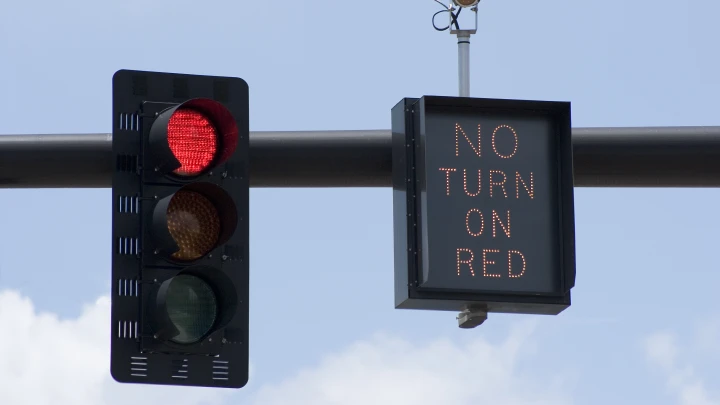Every motorist prioritizes safely navigating traffic intersections. A regulation that has a notable effect on traffic movement is the Right Turn on Red (RTOR) rule. For driving in Missouri to be safe and legal, one must be aware of this regulation. This blog post will give a thorough rundown of Missouri’s RTOR rule, including any current changes or explanations for 2024. We’ll go over what it takes to legally make a right turn on red, when it’s not allowed, and some safe driving techniques. We’ll also look at the advantages and possible drawbacks of this rule.
Importance of Right Turn on Red (RTOR) Rule
The RTOR rule permits drivers to turn right at a red light as long as they stop completely, give way to oncoming traffic and pedestrians, and determine that it is safe to do so. This regulation facilitates better traffic flow, particularly when there is little traffic. The RTOR rule is a useful technique for lowering traffic and wait times at crossings in Missouri and many other states.
Recent Updates (if any) or Clarifications in Missouri (2024)
It’s crucial to remember that traffic laws can change. Although there haven’t been any significant adjustments to Missouri’s RTOR rule for 2024, it’s a good idea to check with the Division of Motor Vehicles (DMV) of the Missouri Department of Revenue to see if there have been any recent changes. For the most recent information, check their website or get in touch with the DMV office in your area.
Understanding the Right Turn on Red Rule in Missouri
Conditions for a Legal Right Turn on Red
In Missouri, motorists are allowed to turn right at a red light as long as they abide by the following rules:
- Come to a Complete Stop: Before entering the intersection, the vehicle must come to a complete stop behind the designated stop line or crosswalk, whichever is closer. A rolling stop is not considered legal.
- Yield the Right of Way: After coming to a complete stop, drivers must yield the right of way to all pedestrians crossing the street in the direction of travel, as well as any oncoming vehicles that have a green light or are already lawfully within the intersection.
- Safe to Proceed: Once the driver has ensured there are no pedestrians or oncoming vehicles and it s safe to proceed, they can make the right turn cautiously.
Exceptions and Prohibitions to RTOR
There are instances in Missouri where it is illegal to turn right on red. The following important exceptions should be noted:
Safe Practices When Making a Right Turn on Red
It’s important to put safety first even in situations where it’s legal to turn right on red. The following are some crucial safety precautions to take:
Benefits of Right Turn on Red
The RTOR rule benefits drivers and traffic flow in general in a number of ways.
Potential Risks of Right Turn on Red
Although the RTOR rule has advantages, it’s crucial to be aware of any possible disadvantages as well:
Frequently Asked Questions (FAQs) about RTOR in Missouri
In Missouri, is it legal for me to turn around at a red light?
A: No, it’s not permitted in Missouri to turn right at a red light. To make a U-turn safely, you have to wait for a turn signal or green light.
When approaching an intersection with a yellow light, what should I do?
A yellow light serves as an alert that the light is going to turn red. Prior to crossing the intersection, if it is safe to do so, halt. On the other hand, if the light turns yellow while you’re already at the junction, move cautiously and finish your turn securely. Rear-end crashes might occur when you suddenly stop quickly at a yellow signal by slamming on your brakes.
Does turning right on red in Missouri have any consequences?
A traffic citation for breaking Missouri’s RTOR requirement is possible. The exact fine amount may differ based on the jurisdiction and the particulars of the infraction.
Q: Does Missouri have any particular laws prohibiting nighttime right turns on red?
A: As long as the normal RTOR guidelines are observed, there are no extra limitations on right turns on red at night in Missouri. But because of the possible decrease in vision at night, it’s crucial to exercise additional caution.
Conclusion: Stay Safe and Drive Smart
For safe and lawful driving in Missouri, one must be aware of the RTOR rule. You can lessen the likelihood of accidents and help to improve traffic flow by adhering to the above-mentioned rules and placing a high priority on safe practices. Recall that using defensive driving strategies and being cautious are essential, even in situations where it is legal to turn right on red.
Extra Advice:
Following these guidelines and comprehending the RTOR rule can help you drive safely and effectively on Missouri’s roads.





























